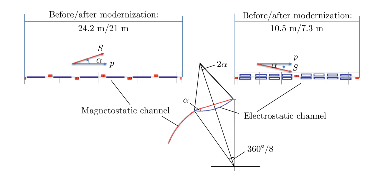Physicists have made a breakthrough in understanding the fundamental properties of matter.
The results of the work have been published in the journal "Letters in ECHA." In recent decades, numerous methods and approaches have been proposed for measuring the electric dipole moment of the deuteron; however, creating an effective experimental setup has remained a challenging task. The authors focused on upgrading the magneto-optical structure of the nucleotron to create conditions for precise measurement of the deuteron's EDM. In their theoretical work, they addressed four key issues.
Firstly, they implemented the concept of "quasi-frozen" spin in accelerator optics. Secondly, they increased the length of the straight sections between the arcs. Thirdly, they ensured zero dispersion in the straight sections. Fourthly, they tackled the challenge of maintaining the length of the accelerator ring while accommodating the placement of equipment.

To achieve these goals, the researchers proposed using electrostatic deflectors with negative curvature, which allows for maintaining the spin direction along the momentum throughout the ring.
As a result of their work, a magneto-optical structure with superperiodicity N = 8 was developed, significantly enhancing the conditions for measuring the electric dipole moment of the deuteron. The authors also considered the possibility of transitioning to superperiodicity N = 16, which would further align the properties of the structure with a "frozen" configuration, reducing the beam rotation angle at each arc.
Yuri Senichev, a professor at the Department of Fundamental Interactions and Cosmology at MIPT and a leading researcher at IYA RAS, noted: "Our work may open new opportunities for studying the electric dipole moment of light nuclei, potentially leading to significant breakthroughs in understanding the fundamental properties of matter."
The developed structure can be utilized not only for measuring the electric dipole moment of the deuteron but also for investigating the electric dipole moment of the proton, making it a versatile tool for future experiments in nuclear physics. These studies could aid in the search for new physical phenomena and deepen our understanding of interactions at the subatomic level. The work is supported by the Russian Science Foundation.
Published with the support of a grant from the Ministry of Education and Science of Russia under the federal project "Popularization of Science and Technology" No. 075-15-2024-571.